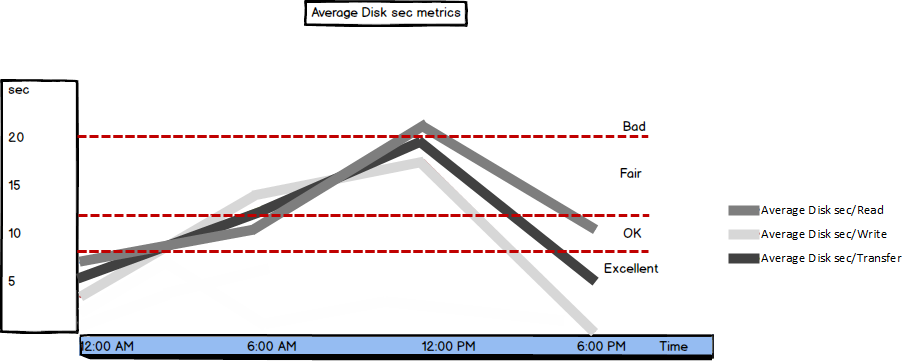- Version
- Download 37
- File Size 176.29 KB
- File Count 1
- Create Date July 18, 2021
- Last Updated July 18, 2021
DISKSPD 2.0.21a 9/21/2018
50GB File Creation (Change Drive Letter)
diskspd.exe –c50G -d300 -r -w40 -t8 -o32 -b64K -Sh -L E:diskpsdtmp.dat > DiskSpeedResults.txt
-c50G– file size 50 GB (it is better to use a large file size so that it does not fit in the cache of the storage controller);-d300– test duration in seconds;-r– random read/write operations (if you need to test sequential access, use –s);-t8– number of threads;-w40– ratio of write to read operations 40%/60%;-o32— queue length;-b64K— block size;-Sh— do not use cache;-L— measure latency;E:diskpsdtmp.dat– test file path.
I have found some recommendations for disk performance in IOPS for some popular Microsoft services:
- Microsoft Exchange 2010 with 5,000 users, each of them receives 75 and sends 30 emails per day, will require at least 3,750 IOPS;
- Microsoft SQL 2008 Server with 3,500 SQL transactions per second (TPS) requires 28,000 IOPS;
- A common Windows application server for 10-100 users requires 10-40 IOPS.
most important disk performance metrics
Using Microsoft Performance Monitor
The recommended Average Disk sec/Read value is below 8ms
| Value (ms) | Performance |
| < 8 | Excellent |
| 8 – 12 | OK |
| 12 – 20 | Fair |
| > 20 | Bad |
Average Disk sec/Write
| Value (ms) | Performance |
| < 1 | Excellent |
| 1 – 2 | OK |
| 2 – 4 | Fair |
| > 4 | Bad |
Average Disk sec/Transfer



 July 18th, 2021
July 18th, 2021  Kapuwa
Kapuwa  Posted in
Posted in 



